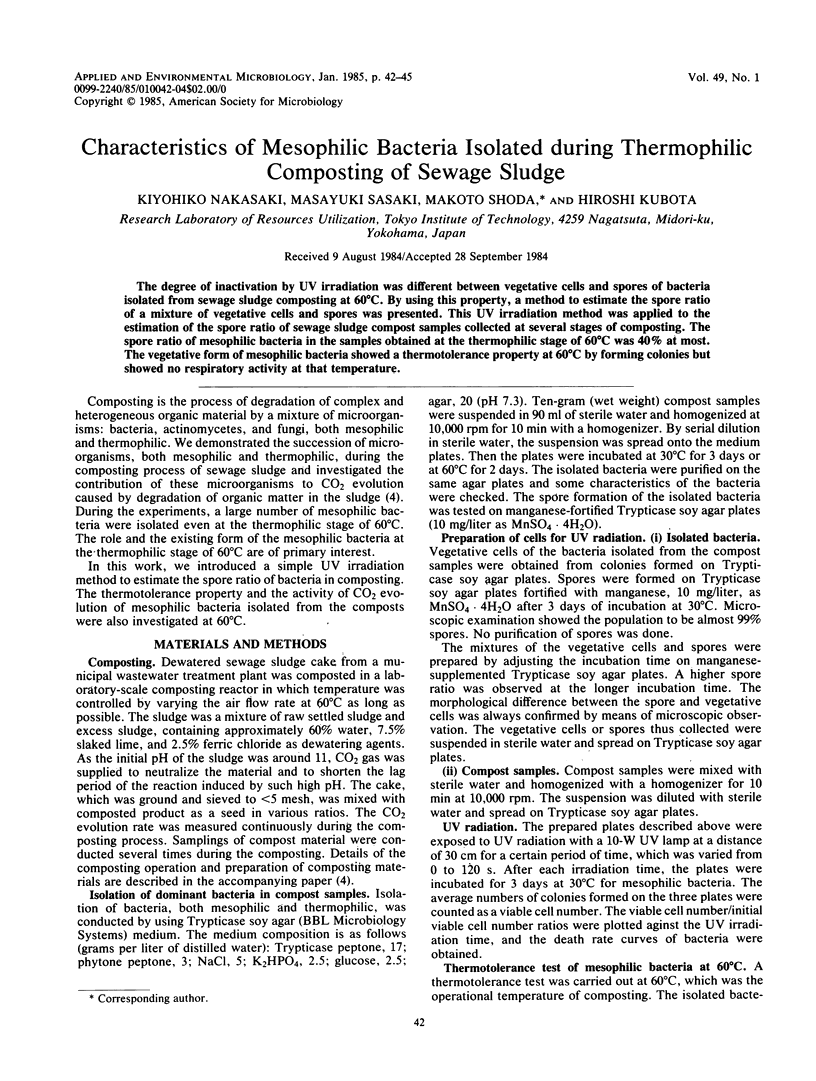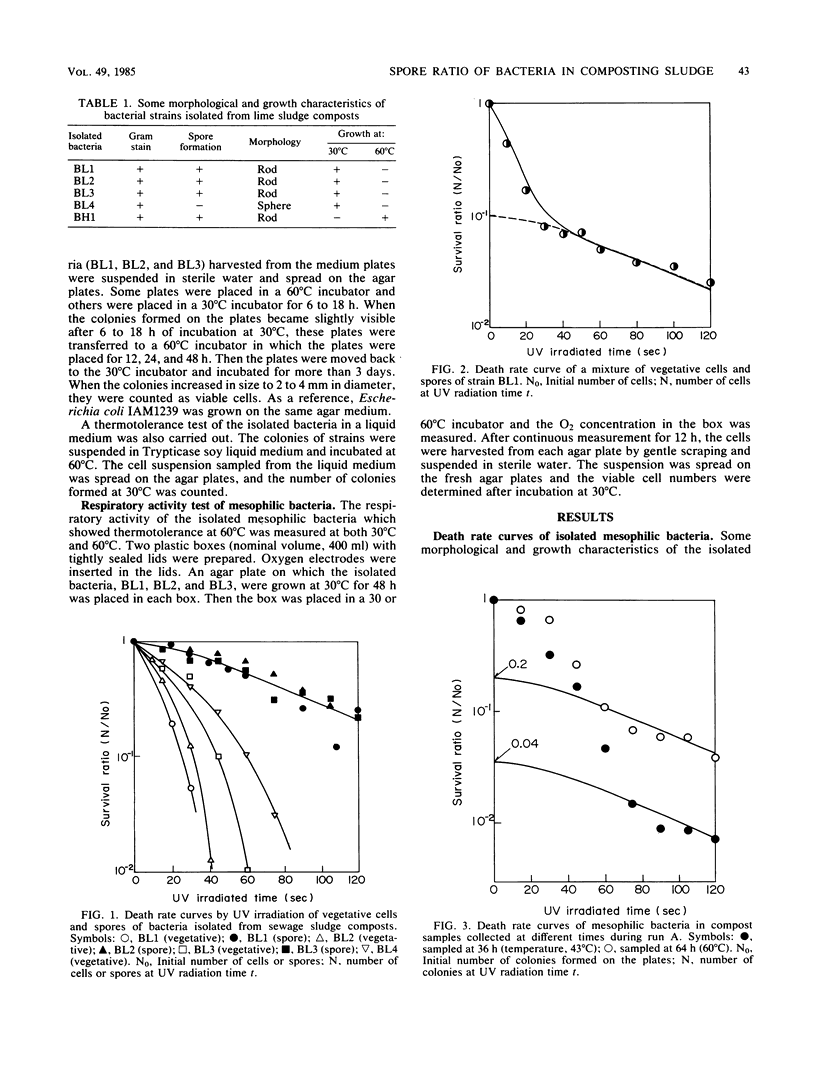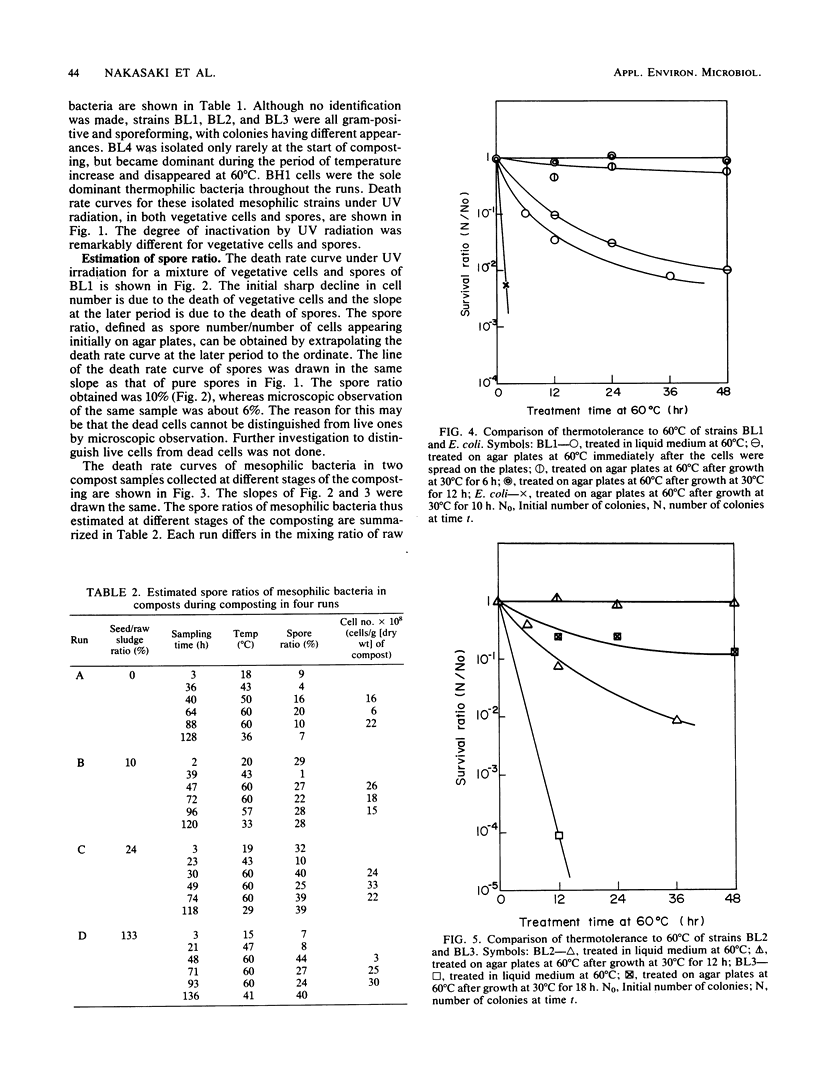Abstract
The degree of inactivation by UV irradiation was different between vegetative cells and spores of bacteria isolated from sewage sludge composting at 60°C. By using this property, a method to estimate the spore ratio of a mixture of vegetative cells and spores was presented. This UV irradiation method was applied to the estimation of the spore ratio of sewage sludge compost samples collected at several stages of composting. The spore ratio of mesophilic bacteria in the samples obtained at the thermophilic stage of 60°C was 40% at most. The vegetative form of mesophilic bacteria showed a thermotolerance property at 60°C by forming colonies but showed no respiratory activity at that temperature.
Full text
PDF



Selected References
These references are in PubMed. This may not be the complete list of references from this article.
- Goldblith S. A., Wang D. I. Effect of Microwaves on Escherichia coli and Bacillus subtilis. Appl Microbiol. 1967 Nov;15(6):1371–1375. doi: 10.1128/am.15.6.1371-1375.1967. [DOI] [PMC free article] [PubMed] [Google Scholar]
- Nakasaki K., Sasaki M., Shoda M., Kubota H. Change in Microbial Numbers during Thermophilic Composting of Sewage Sludge with Reference to CO(2) Evolution Rate. Appl Environ Microbiol. 1985 Jan;49(1):37–41. doi: 10.1128/aem.49.1.37-41.1985. [DOI] [PMC free article] [PubMed] [Google Scholar]
- Zamenhof S., Bursztyn H., Reddy T. K., Zamenhof P. J. Genetic Factors in Radiation Resistance of Bacillus subtilis. J Bacteriol. 1965 Jul;90(1):108–115. doi: 10.1128/jb.90.1.108-115.1965. [DOI] [PMC free article] [PubMed] [Google Scholar]


